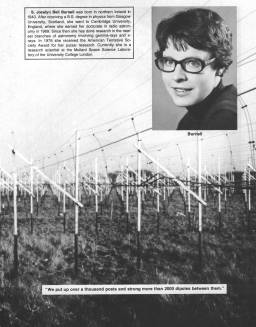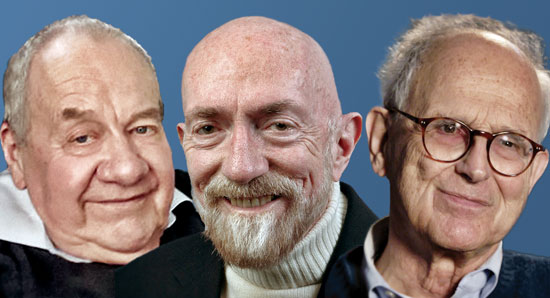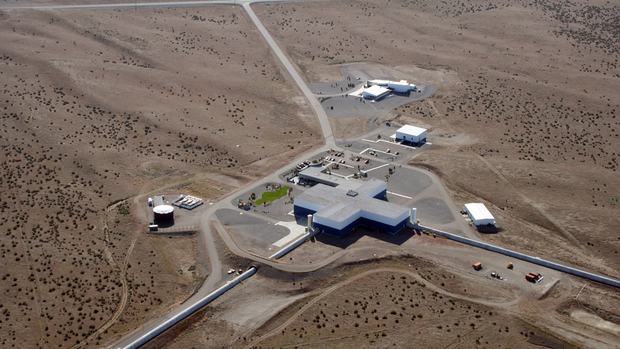2016: The Year of the Black Hole (1)
The 2016 Nobel Prize in physics will be announced in only 4 days, on Tuesday October 4th. Ronald Drever, Kip Thorne and Rainer Weiss, three founders of the detection of gravitational waves (2). They have already won multiple awards for this discovery including the Kavli Prize in Astrophysics, the Gruber Cosmology Prize, a Special Breakthrough Prize in Fundamental Physics and the Shaw Prize in Astronomy. (Kudos to those behind the Gruber Cosmology Prize and the Special Breakthrough Prize for explicitly naming the LIGO team in their awards, something the Nobel Prize award likely won’t do.)
A Nobel Prize in physics for this work will celebrate more than the first direct detection of gravitational waves, astonishing as this feat is. It also celebrates a breakthrough in black hole research, as it will be the first Nobel Prize involving definitive evidence for black holes. It also involves the clearest evidence yet for the existence of black holes, as my colleagues Daniel Eisenstein and Avi Loeb from the Harvard-Smithsonian Center for Astrophysics pointed out soon after the LIGO announcement in February.
For context, of the 109 Nobel Prizes awarded in physics I count 12 that clearly involve astrophysics, 9 of them for observational work (3). In no particular order the 9 observational ones are the discovery of cosmic rays, work in the fields of nuclear physics and cosmic radiation, the detection of cosmic neutrinos, work in radio astrophysics including the discovery of pulsars, the discovery of a binary pulsar, the discovery of the cosmic microwave background (CMB) radiation, studies of the CMB, work leading to the discovery of cosmic X-ray sources and the discovery that the expansion of the universe is accelerating.
So, leading the way in astrophysics Nobel Prizes are 2 awards for pulsar work, 2 for work on the CMB and 2 for work on cosmic radiation. Black holes have never been explicitly mentioned in an award, though it’s important to note that the Nobel Prize awarded to Riccardo Giacconi "for pioneering contributions to astrophysics, which have led to the discovery of cosmic X-ray sources" was a crucial step in finding evidence for black holes. Giacconi’s work established a whole new field of astrophysics, eventually leading to the development of NASA’s Chandra X-ray Observatory, and indirectly to my job helping to publicize Chandra science. Note that Chandra has been involved in a number of results relating to gravitational waves (4).

Jocelyn Bell Burnell with the radio telescope she used to discover pulsars. Credit: Jocelyn Bell Burnell.
Although there are limitations in interpreting a single prize, I think it’s reasonable to argue that research done with pulsars has, until this year, taught us more about physics than research done with black holes. For example decades ago neutron star work enabled the indirect detection of gravitational waves, a key test of General Relativity resulting in one of the Nobel Prizes mentioned earlier. It has also allowed other tests of General Relativity. Neutron stars have also taught us a great deal of astrophysics, as I wrote back in 2013.
In the case of black holes, I think we have learned a lot about astrophysics but less about physics. For example, here are many examples of important astrophysics we have learned from Chandra observations of black holes. From my perspective, black hole work hasn’t taught us as much about physics. For example, scientists will sometimes assume that General Relativity holds to make inferences about the properties of black holes, such as their spins. This is important work for understanding the astrophysics of black holes, but not for understanding fundamental physics.
With the detection by LIGO of gravitational radiation from two and perhaps three different black hole mergers, and the prospect of many more to come, the value of physics research using black holes may soon catch up with and surpass that of research using neutron stars. A wild card here is how many events involving neutron stars will be detected using gravitational waves and what we’ll learn from such observations.

A simulation showing two black holes that are close to merging, as their orbital separation decreases via the emission of gravitational waves. The distortion of light from background stars is from gravitational lensing caused by the warping of spacetime by the black holes' strong gravity. Credit: SXS, the Simulating eXtreme Spacetimes project.
For popular interest there isn’t much of a contest: research with black holes gets a lot more attention than research with neutron stars. Though neutron stars are remarkable and exotic objects, it’s hard to compete for public attention with a thing that pulls material in until it disappears from view forever. Black holes are so popular that the term is regularly used outside astrophysics for describing dire situations, such as a recent example about the economy edging closer to a black hole.
Despite the renown and familiarity of black holes, news about them has been eclipsed over the last few years by another field. The hottest news topic in astronomy recently has been exoplanets, especially with all the results coming from NASA’s Kepler satellite and other results such as the exciting discovery of a planet found in the habitable zone of the nearest star to our Sun. However, with the excellent prospects for new gravitational wave detections, especially from mergers between black holes, this situation could change. We may look back to 2016 as the year when black hole work regularly started challenging exoplanet work for the biggest news stories in astronomy.
End notes:
(1) The title of this blog post was inspired by a smart tweet from astrophysicist JJ Eldridge.
(2) The LIGO press conference announcing the detection of gravitational waves was superb, as I wrote earlier this year, one of the best I’ve seen. It did full justice to the outstanding science.
(3) In 2013 I discussed other good candidates for future Nobel Prizes in Physics, including work on exoplanets, dark matter and several other important topics in cosmology.
(4) The Chandra X-ray Observatory was named after Nobel Laureate Subrahmanyan Chandrasekhar, shown in the figure below, who did important theoretical work on gravitational waves, beginning in 1970 and extending right up until he passed away in 1995. It’s apt that the observatory named after him has gone on to observe so many objects that are producing – or will produce – gravitational waves. Theorists like Chandrasekhar laid the foundation, now observers can surge forward with them to do more groundbreaking science.
By Peter Edmonds
Originally published at: http://peterdedmonds.blogspot.com/2016/09/2016-year-of-black-hole-1.html
Please note this is a moderated blog. No pornography, spam, profanity or discriminatory remarks are allowed. No personal attacks are allowed. Users should stay on topic to keep it relevant for the readers.
Read the privacy statement



